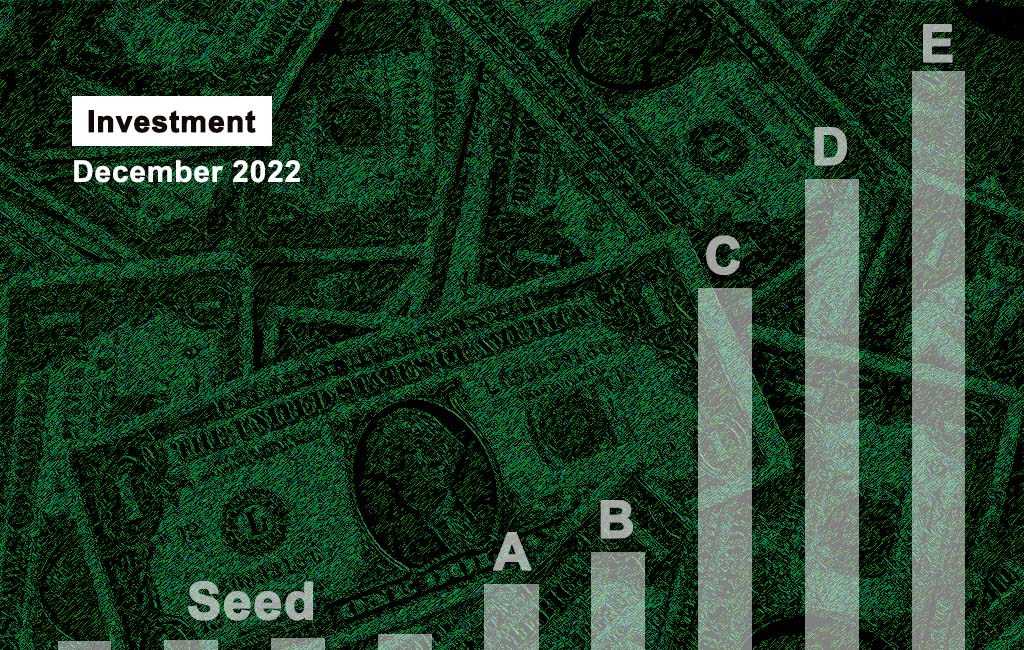December 2022’s 55 robotics investments totaled US $1.14B, a 7.7% increase over December 2021’s funding total. Investment into companies providing robotics solutions for autonomous ground transportation such as sensors, autonomy ‘stacks’ and ‘drivers’, and whole cloth systems, was particularly strong.

Robotics investments for the month of December 2022 totaled US $1.14B (See Table 1, below). This figure was the result of 55 investments, and represents a 7.7% increase over December 2021’s funding total of $1.06B (representing 65 investments).
December 2022 investment into companies providing robotics solutions for autonomous ground transportation such as sensors, autonomy ‘stacks’ and ‘drivers’, and whole cloth systems, was robust (Einride, Helm.ai, Jiuyao Intelligent, Kuandeng, Kodiak Robotics, PhiGent Robotics, and Fixposition provide examples). Firms providing products and services for industrial inspection, mapping and surveying also attracted solid funding amounts (Energy Robotics, Flybotix, and Exyn Technologies, for example).
Companies developing robotic interventional systems, primarily surgical platforms, were well represented (i.e. LEM Surgical, Ronovo Surgical, and Sinovation Medical), as well as developers of field robotics solutions such as Scythe Robotics and Naïo Technologies.
Table 1: December 2022 Robotics Funding and Investment
As described in Figure 1, China and the USA received the bulk of the funding rounds. The same holds for the total amount of December 2022 investment, with the exception of outlier Sweden which was buoyed by hundreds of millions poured in Swedish firm Einride, a producer of driverless electric trucks.

Figure 1: December 2022 Robotics Investment by Country
December 2022 funding and investment types followed a familiar pattern, with numerous early stage investments, and with large investments coming in later rounds or by other means.

Figure 2: December 2022 Robotics Funding Amounts by Investment Type
Editors’ note: What defines robotics investments? The answer to this simple question is central in any attempt to quantify them with some degree of rigor. To make investment analyses consistent, repeatable, and valuable, it is critical to wring out as much subjectivity as possible during the evaluation process. This begins with a definition of terms and a description of assumptions.
Investors and investing
Investment should come from venture capital firms, corporate investment groups, angel investors, and other sources. Friends-and-family investments, government/non-governmental agency grants, and crowd-sourced funding are excluded.
Robotics and intelligent systems companies
Robotics companies must generate or expect to generate revenue from the production of robotics products (that sense, analyze, and act in the physical world), hardware or software subsystems and enabling technologies for robots, or services supporting robotics devices. For this analysis, autonomous vehicles (including technologies that support autonomous driving) and drones are considered robots, while 3D printers, CNC systems, and various types of “hard” automation are not.
Companies that are “robotic” in name only, or use the term “robot” to describe products and services that that do not enable or support devices acting in the physical world, are excluded. For example, this includes “software robots” and robotic process automation. Many firms have multiple locations in different countries. Company locations given in the analysis are based on the publicly listed headquarters in legal documents, press releases, etc.
Verification
Funding information is collected from a number of public and private sources. These include press releases from corporations and investment groups, corporate briefings, imarket research firms, and association and industry publications. In addition, information comes from sessions at conferences and seminars, as well as during private interviews with industry representatives, investors, and others. Unverifiable investments are excluded and estimates are made where investment amounts are not provided.
Credit: Source link


Comments are closed.